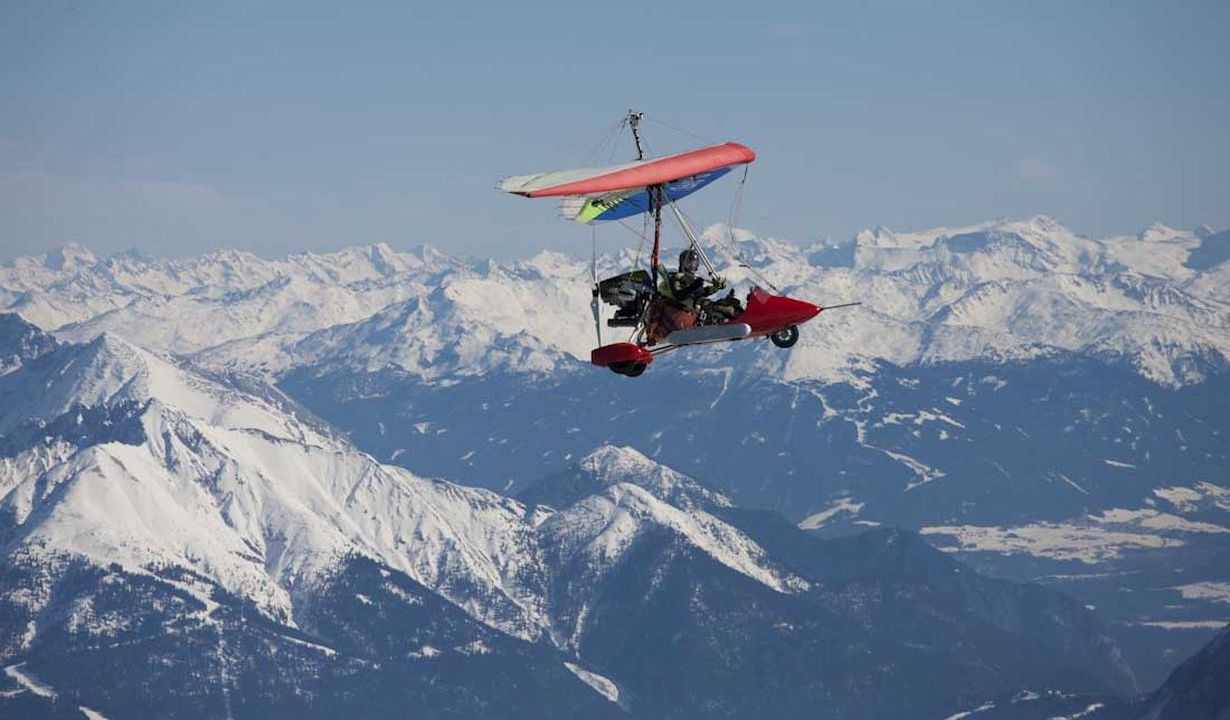Strong precipitation or extreme drought – the frequency of extreme weather events is increasing worldwide. Existing climate models, however, do not adequately show their dynamics. Researchers of Karlsruhe Institute of Technology (KIT) assume that ultrafine particles in the atmosphere have a significant impact on cloud physics and, hence, on weather. Their aircraft measurements confirm an increase in particle number emissions in spite of a decreasing coarse fine dust concentration and blame it to the combustion of fossil fuels in exhaust gas cleaning systems. Their results can be found in Scientific Reports: https://doi.org/10.1038/s41598-022-11500-5
According to latest reports of the Intergovernmental Panel on Climate Change, IPCC for short, weather extremes, such as droughts and strong precipitation, will increase in future. “So far, climate researchers have attributed these changes to an increasing carbon dioxide concentration and the higher water vapor capacity of a warmer atmosphere,” says Dr. Wolfgang Junkermann from the Atmospheric Environmental Research Division of KIT’s Institute of Meteorology and Climate Research (IMK-IFU), KIT’s Campus Alpine in Garmisch-Partenkirchen. As carbon dioxide is homogeneously distributed in space due to its long lifetime, however, it does not sufficiently explain the variability of the distribution and occurrence of extreme weather events without taking into account the hydrological cycle, he adds.
Together with climate researcher Professor Jorg Hacker from the independent Airborne Research Australia (ARA) Research Institute, Junkermann argues that ultrafine particles of a few up to 100 nanometers in size are produced by the combustion of fossil fuels and significantly contribute to extreme weather events, because they act as condensation nuclei and have a regional, short-term impact on cloud physics. “With conventional cloud formation models, we can show that the increase in ultrafine particles results in the formation of also particularly fine droplets,” Junkermann explains. “As a result, water stays much longer in the atmosphere, rain is initially suppressed, and an additional energy reservoir develops in the middle troposphere, which promotes extreme precipitation. It may happen hundreds of kilometers away. A heterogeneous distribution of nanoparticle pollution might explain the big regional differences of extreme weather events.
Nanoparticles from Modern Exhaust Gas Cleaning
So far, the impact of ultrafine particles on cloud formation can be observed directly in very rare cases only. For this reason, the researchers used data on the amount and distribution of ultrafine dust in the Earth’s atmosphere and on changes of the hydrological cycle. They found that in many areas of the Earth, an increase in particle numbers correlates with regionally changed precipitation patterns. “Over the Mediterranean Sea, for instance, particle concentration has increased by a factor of 25 since the 1970s,” Junkermann says. “In the same period, strong variations of precipitation can be observed with a decrease in regular rainfall and an increase in drought and extreme events. “ Similar patterns are encountered in Australia and Mongolia. This finding is based on extensive measurement series with small airplanes that produced the probably biggest dataset of this type over a period of 20 years. The data cover historically reconstructable emissions and well-documented regional climate changes in areas of Asia, Central America, Europe, and Australia.
These data confirm an extreme increase in particle emissions since the 1970s. “At certain locations, we found up to 150,000 particles/cm³ compared to about 1000 particles 40 years ago,” Junkermann says. “These extreme concentrations were attributed to power plants, refineries, or ship traffic and often and in particular to large incineration plants with latest exhaust gas technology.” Since the 1990s, ammonia has been used to prevent the formation of nitrogen oxides (NOx) in exhaust gases of industrial facilities. The researchers associated this with the emission of many nanoparticles into the atmosphere.
Appeal to Climate Research
In their article, the scientists call for a better consideration of the increasing ultrafine dust concentration in the atmosphere in the climate research scenarios. Calculations used so far have been based on dust values from emission scenarios of the beginning of the century. “Updated data will considerably improve modeling of the hydrological cycle, precipitation changes, and extreme weather events,” Junkermann points out. (mhe)
Original Publication
Wolfgang Junkermann, Jorg Hacker: Unprecedented levels of ultrafine particles, major sources, and the hydrological cycle. Scientific Reports, 2022. DOI: https://doi.org/10.1038/s41598-022-11500-5
More about the KIT Climate and Environment Center: https://www.klima-umwelt.kit.edu/english/
In close partnership with society, KIT develops solutions for urgent challenges – from climate change, energy transition and sustainable use of natural resources to artificial intelligence, sovereignty and an aging population. As The University in the Helmholtz Association, KIT unites scientific excellence from insight to application-driven research under one roof – and is thus in a unique position to drive this transformation. As a University of Excellence, KIT offers its more than 10,000 employees and 22,800 students outstanding opportunities to shape a sustainable and resilient future. KIT – Science for Impact.

